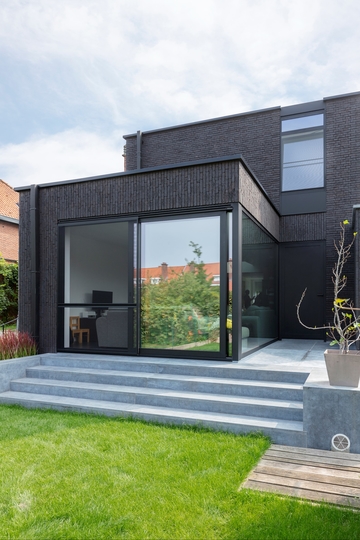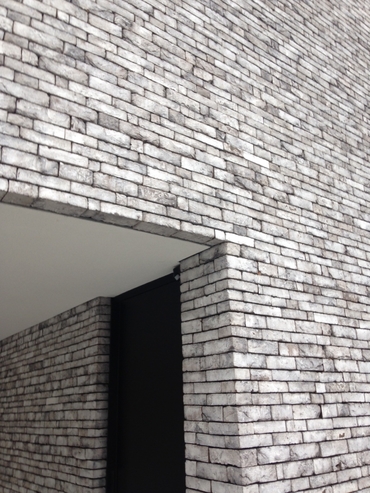Adhesive and thin-bed mortar
If you opt for joint-free brickwork, you will want to ensure that your joints are as thin as possible. There are two ways of doing this. Either by bonding the bricks or using a thin-bed mortar. How can you decide which is best for your project?

Adhesive mortar
With bonded brickwork, you use a special dosing gun or bag instead of a trowel. In other words, you’re bonding the bricks rather than laying them in the conventional sense. For larger projects, an adhesive pump is used, which needs modified scaffolding and more maintenance. Smaller, portable adhesive pumps are also available.
It is the responsibility of the adhesive supplier to provide a suitable adhesive for a certain base. As the customer, make sure to contact your adhesive supplier. With bonded brickwork, the joint widths vary from 3 to 6 mm according to the adhesive manufacturer. Adhesive mortars have an adhesive strength that is up to three times that of traditional mortar.
Thin-bed mortar
If you decide to work with a trowel, as with traditional bricklaying, but give your project the look of bonded brickwork, then you can opt for a thin-bed mortar. This type of mortar gives thin joints (4 to 8 mm) and can be worked with a trowel. Thin-bed mortars give a facade a look that is similar to adhesive mortar, and perform just as well as mortar.

Determining factors
Experience of the contractor
To decide between two applications, you first need to look at the experience of the contractor. Does he or she have experience with bonding, or just with traditional bricklaying methods? This can be a deciding factor in your choice of application.
Brick
If that’s not important, then the brick that you choose has a key role to play. The sleeker and more straight the brick, the thinner the joints can be.
If the joints are not adapted to the brick that you choose and you opt for joints that are too thin, the look can quickly have the feeling of ‘dancing’ bricks. This is because you cannot maintain nice, horizontal lines due to the deviations in the shapes of the bricks with respect to one another.
Joint width
Choosing the right joint width is extremely important. The joint width options for adhesive and thin-bed mortar overlap somewhat. As such, it is a good idea to create a test wall first, so that you can determine the joint width that you want.
If you have a joint width that is suitable for both applications, you can freely decide how to proceed.

